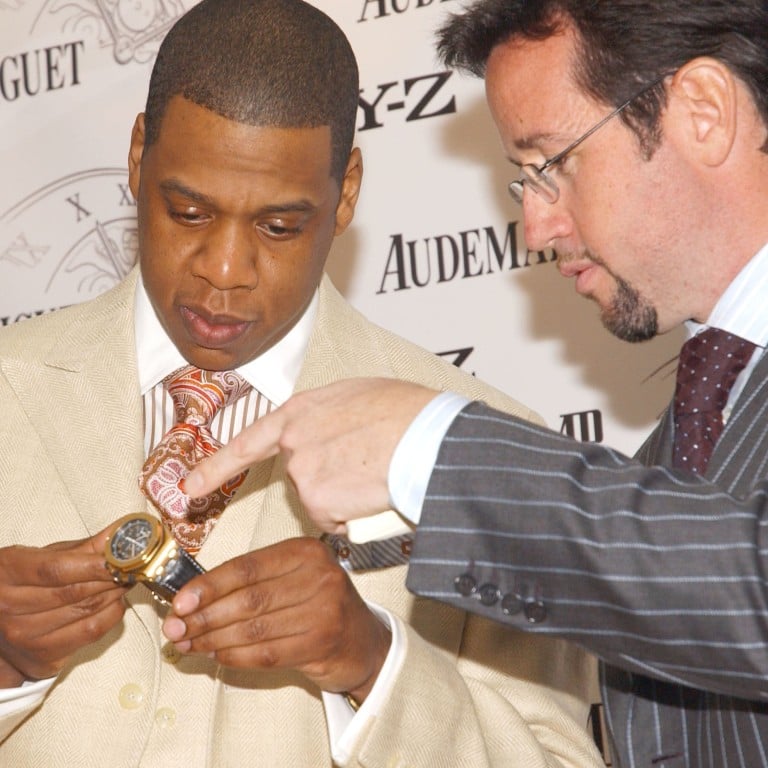How hip-hop got serious about watches: from Tupac and Snoop Dogg’s blinged-out Rolexes, to Jay-Z and Pharrell’s partnerships with Audemars Piguet and Richard Mille, high horology has proved a rapper’s delight

- Back in the 90s, Rolexes and the Audemars Piguet’s Royal Oak Offshore were a staple symbol of wealth and power on rappers’ wrists – soon followed an appreciation for the Patek Philippe Nautilus and Breitling Navitimer
- Today, hip-hop horology is big business – as evidenced in the RM 52-05 Manual Winding Tourbillon Pharrell Williams and Audemars Piguet’s Royal Oak Offshore Jay-Z 10th Anniversary
Watch any mainstream hip-hop music video, and you’ll likely spot one if not all of the following tropes: heavy gold chains with blinged-out pendants; a hot set of wheels, often a classic low rider; and a performer with their watch of choice fully in view.
All of these elements nod to the notion of flaunting excess wealth that, some say, is at the root of hip-hop culture. Like jazz and blues, hip-hop rose as a response to the oppression and marginalisation of Black communities across the US. Its artists’ overt displays of status symbolise success and victory against the establishment.
It’s become so much of the industry’s identity that you’ll find rappers name-checking top brands in a high proportion of hit songs – on Migos’ 2018 album Culture II, the rapper made 28 references to Patek Philippe alone.

While conveying a loud, proud image of success may be at the heart of the culture, how that street cred is communicated has changed over time. Rappers of the 1970s through 90s went for the tried and trusted Rolex, often seen on the wrist of pioneers like Tupac and Snoop Dogg. Over time, this appetite for bling evolved from the staple Day-Date of the genre’s heyday, to watches outrageously (some would argue tastelessly) customised with aftermarket diamonds and precious gems. More recently, the community began to embrace the ever-so-popular trend of quiet luxury.
Back in the day, an essential element to flaunting wealth is that it had to be visible. Hence, rappers often opted for big, flashy designs that fit right in with the oversized craze the watch industry was driving in the 1990s and 2000s.
“At first, Rolex was the brand that symbolised success,” says Sebastian Vivas, Audemars Piguet’s heritage and museum director. By the mid-1990s, the community was embracing more ostentatious brands and models. The very substantial Audemars Piguet’s Royal Oak Offshore became a grail watch for many rappers during this time. “It came to embody prestige and success with its outsize design and high value – the yellow-gold version weighs over 400 grams,” adds Vivas.

Celebrating its 50th birthday in 2023, hip-hop’s emergence in the late 70s came at a pivotal moment in the watchmaking world. Around this time, the Gérald Genta-designed Patek Philippe Nautilus and IWC Ingenieur began to challenge the industry’s perception of luxury. Expensive timepieces were no longer paired only with a leather strap and reserved for black tie galas or the boardroom; stainless steel and gold sports watches with bracelets found their way to country clubs and golf courses.
Watches from this era gave new meaning to refinement and casualness. By the 1990s, wearing a Breitling Navitimer of 44mm or more with an oversized football jersey and a pair of baggy jeans, all while spitting savage rhymes, just kind of made sense (think Nelly).

“The hip-hop world’s affinity for sports watches – their constant mentions of AP, Patek Philippe, Rolex and Richard Mille in their lyrics – have contributed to the surge in popularity of sports watches over the past five years,” says Austen Chu, co-founder and CEO of watch resale platform Wristcheck. “Pop culture plays a crucial role in shaping and influencing trends and buying habits in the watch world. It serves as the most prominent top-of-the-funnel, awareness-building factor.”